General Antivirus
Posted: March 16, 2009
Threat Metric
The Threat Meter is a malware assessment that SpywareRemove.com's research team is able to
give every identifiable malware threat. Our Threat Meter includes several criteria based off of
specific malware threats to value their severity, reach and volume. The Threat Meter is able to give
you a numerical breakdown of each threat's initial Threat Level, Detection Count, Volume Count,
Trend Path and Percentage Impact. The overall ranking of each threat in the Threat Meter is a basic
breakdown of how all threats are ranked within our own extensive malware database. The scoring for
each specific malware threat can be easily compared to other emerging threats to draw a contrast in
its particular severity. The Threat Meter is a useful tool in the endeavor of seeking a solution to
remove a threat or pursue additional analytical research for all types of computer users.
The following fields listed on the Threat Meter containing a specific value, are explained in detail below:
Threat Level: The threat level scale goes from 1 to 10 where 10 is the highest level of severity and 1 is the lowest level of severity. Each specific level is relative to the threat's consistent assessed behaviors collected from SpyHunter's risk assessment model.
Detection Count: The collective number of confirmed and suspected cases of a particular malware threat. The detection count is calculated from infected PCs retrieved from diagnostic and scan log reports generated by SpyHunter.
Volume Count: Similar to the detection count, the Volume Count is specifically based on the number of confirmed and suspected threats infecting systems on a daily basis. High volume counts usually represent a popular threat but may or may not have infected a large number of systems. High detection count threats could lay dormant and have a low volume count. Criteria for Volume Count is relative to a daily detection count.
Trend Path: The Trend Path, utilizing an up arrow, down arrow or equal symbol, represents the level of recent movement of a particular threat. Up arrows represent an increase, down arrows represent a decline and the equal symbol represent no change to a threat's recent movement.
% Impact (Last 7 Days): This demonstrates a 7-day period change in the frequency of a malware threat infecting PCs. The percentage impact correlates directly to the current Trend Path to determine a rise or decline in the percentage.
The following fields listed on the Threat Meter containing a specific value, are explained in detail below:
Threat Level: The threat level scale goes from 1 to 10 where 10 is the highest level of severity and 1 is the lowest level of severity. Each specific level is relative to the threat's consistent assessed behaviors collected from SpyHunter's risk assessment model.
Detection Count: The collective number of confirmed and suspected cases of a particular malware threat. The detection count is calculated from infected PCs retrieved from diagnostic and scan log reports generated by SpyHunter.
Volume Count: Similar to the detection count, the Volume Count is specifically based on the number of confirmed and suspected threats infecting systems on a daily basis. High volume counts usually represent a popular threat but may or may not have infected a large number of systems. High detection count threats could lay dormant and have a low volume count. Criteria for Volume Count is relative to a daily detection count.
Trend Path: The Trend Path, utilizing an up arrow, down arrow or equal symbol, represents the level of recent movement of a particular threat. Up arrows represent an increase, down arrows represent a decline and the equal symbol represent no change to a threat's recent movement.
% Impact (Last 7 Days): This demonstrates a 7-day period change in the frequency of a malware threat infecting PCs. The percentage impact correlates directly to the current Trend Path to determine a rise or decline in the percentage.
| Threat Level: | 10/10 |
|---|---|
| Infected PCs: | 23 |
| First Seen: | July 24, 2009 |
|---|---|
| Last Seen: | September 26, 2022 |
| OS(es) Affected: | Windows |
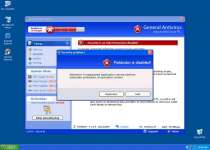 General Antivirus, a clone of AlfaCleaner and Internet Antivirus Pro, is a rogue anti-spyware program that may download and install without your knowledge or consent through a Trojan. General Antivirus pops up fake security alerts on your taskbar in order to trick you into purchasing their software. General Antivirus may also download and install other unwanted software without your permission.
General Antivirus, a clone of AlfaCleaner and Internet Antivirus Pro, is a rogue anti-spyware program that may download and install without your knowledge or consent through a Trojan. General Antivirus pops up fake security alerts on your taskbar in order to trick you into purchasing their software. General Antivirus may also download and install other unwanted software without your permission.
Technical Details
File System Modifications
Tutorials: If you wish to learn how to remove malware components manually, you can read the tutorials on how to find malware, kill unwanted processes, remove malicious DLLs and delete other harmful files. Always be sure to back up your PC before making any changes.
The following files were created in the system:GeneralAntivirus.exe
File name: GeneralAntivirus.exeSize: 1.94 MB (1944954 bytes)
MD5: 6b0e0576c34c9fbb39112ae4f4c5268a
Detection count: 67
File type: Executable File
Mime Type: unknown/exe
Group: Malware file
Last Updated: December 11, 2009
GenAvir.exe
File name: GenAvir.exeSize: 1.44 MB (1447936 bytes)
MD5: 209b036e089b9c4b70d2a0f592614236
Detection count: 40
File type: Executable File
Mime Type: unknown/exe
Group: Malware file
Last Updated: December 11, 2009
Additional Information
The following directories were created:
%AppData%\General Antivirus
The following cookies were detected:
generalantivirus
Related Posts
- Generalprotection.click
- GeneralCache
- Study General
- PUP.General Crawler
- ‘Procuraduría General de la República’ Ransomware
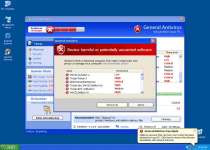
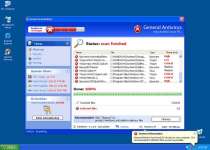
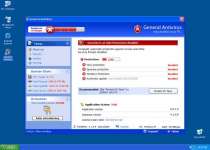

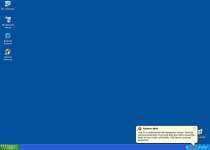
When I try to delete GenAvir.exe it says access denied. How do I delete it?
Also if i try to end the general antivirus process manually, it instantly starts a new process so I can't just delete the folder and its contents...
How do I remove the trial version of General Antivirus. I have purchased one after the trial. My computer is telling me there is problem due to both programs being on my comp.
Thank you.
Jules Velioglu